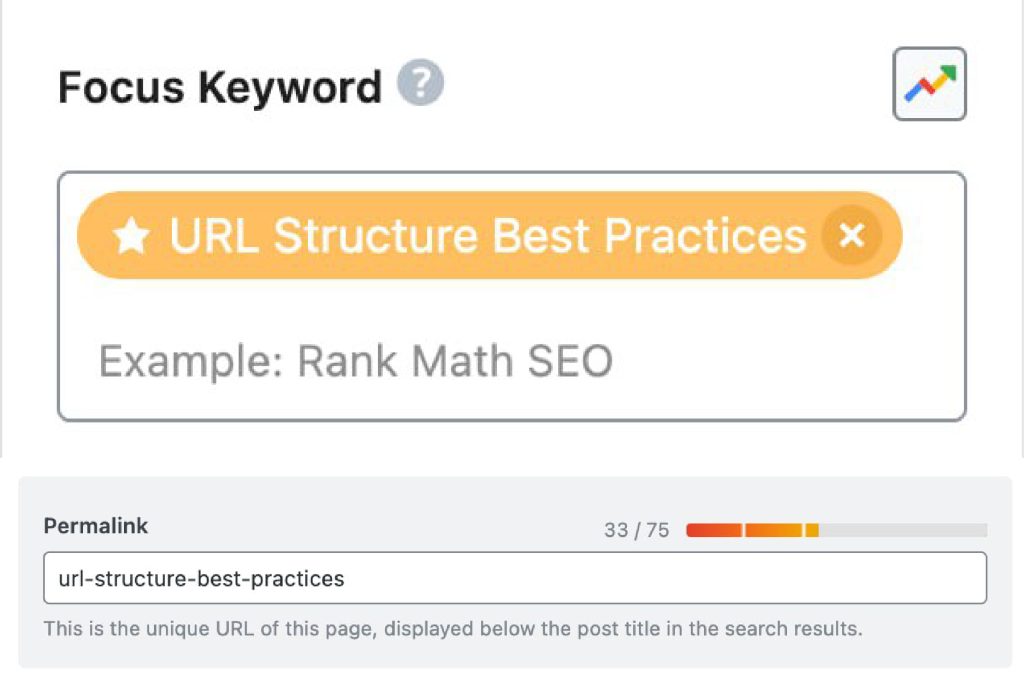URLs are an essential part of any online business. It’s a unique online address to reference website pages, emails, and file transfers. It is important in search engine optimization and how they will rank your pages. So, we want to elaborate on the URL structure best practices and the common mistakes you should avoid.
By giving you a detailed insight into what URLs are, their use, and their structure, you’ll better understand what it takes to optimize these elements. We’ll also explain how you can improve your URLs to fit Google’s ever-changing algorithm better and increase your chances of getting ranked.
Continue reading to discover all there is to know about crafting the ideal URL structure and the best practices!

Source: freepik.com
What Is URL Structure?
Before diving into the best practices for optimizing a URL structure, we want to elaborate on what it is. The term URL stands for uniform resource locator and is used as an online address to access a specific page on a website. These elements are always shown on the web browser’s address bar to inform the users about the page they’re visiting.
While many refer to them as links, these URLs have a specific structure you should consider. The three main parts of this structure are known as:
- Protocol
- Authority
- Path
Protocol
The first element, known as the protocol or scheme, indicates how the connection between the browser and the web server will be established. The two most common examples you should know are HTTP (Hypertext Transfer Protocol) and HTTPS (Hypertext Transfer Protocol Secure).
While they’re both standard protocols for establishing such a connection, HTTPS adds an encryption layer to the session. This layer prevents anyone from reading the data.
Authority
The second element, authority, tells the browser who the website belongs to and where to find it. It consists of a subdomain, domain, and top-level domain (TLD), also known as domain extension.
The most popular subdomain used is the renowned “www.” referring to the World Wide Web. However, many businesses disregard this component because it doesn’t affect the quality of URLs. The domain refers to the name of your website, and it should always be unique and easy to remember.
Lastly, the domain extension is the text that follows the name of your website. Even though there are numerous TLDs you can choose from, the most common options are “.com”, “.org”, “.net”, “.gov”, and “.edu”.
Path
The path is used to direct the browser to the specific page or resource on the website. It’s usually made from two components: the subfolder and slug.
Subfolders are often called subdirectories and represent folders or directories within the main directory used to organize related content. For example, you can have separate subfolders for your blog and products containing relevant content.
On the other hand, the slug is used to identify a specific page and helps users understand their location on the website. This component must be easily understandable so users don’t mistake the content for something else.
The SEO Impact of a Well-Optimized URL Structure
You should always take the time to optimize the URL structure because it helps users and search engines find and understand your page’s content better. With many online resources, these elements point the browsers to the exact page or file for which the user is searching. Thus, having a unique and easily identifiable URL will enhance the overall user experience.
Besides providing the users with easy navigation around your website, these elements are also ranking factors for search engines. Helping them crawl easily and index the pages on your website by giving them information on how they relate will increase your chances of ranking higher.
URL Structure Best Practices
After elaborating on URLs’ meaning and SEO impact, we want to highlight the best practices you should focus on during your optimization process. The ones that have the biggest impact on your business are the following:
Avoiding complex and dynamic URLs
The first thing you should remember is always to avoid complex and dynamic URLs. The best-performing links are the ones that keep it short and simple. So, instead of explaining the content on the page, you should use the most relevant terms or phrases to describe it.

Use relevant keywords
You should focus on using relevant keywords within the URL structure. Since keyword research is essential to any SEO strategy, incorporating the main keyword into this element will help users and search engines understand the page’s content. For example, if you’re optimizing the URL for a blog, you can include the keyword used in the main title so the path is relevant to the content.
However, you should always avoid the practice of keyword stuffing so the search engines don’t consider your page as spam. It’s best to use one to two keywords depending on the page’s content.

Utilizing hyphens to separate words
Using hyphens to separate words is crucial to identify the breaks between words because browsers don’t allow spaces in the web address. This practice helps users and search engines easily read the URL without getting confused about its meaning.
Since many people use underscores instead of hyphens, we highly advise against this practice. These symbols may confuse the search engines and lower your ranking opportunities.

Eliminate stop words
Since it’s best to use a meaningful URL, some businesses prefer to eliminate stop words to decrease the word count. This includes words such as: “or”, “of”, “a”, “an”, “the”, “and”, “to”, as well as “for”. Doing so will make the URL easily readable and short.

Avoid using special characters
When creating a URL, it’s best to avoid using special characters that may break the link. Punctuations, symbols, and underscores confuse search engines and are hard for users to read. Hence, it’s best to stick to simple phrases, numbers, and hyphens.

Use lowercase letters
When creating a URL structure, we advise our clients to use lowercase letters because it’s case-sensitive after the domain name. This means that if you include uppercase letters after your website’s name, it’ll result in a “404 page” where the users won’t have access to the page.
Even though many web content management systems like WordPress automatically default your URLs into lowercase, always double-check existing ones. Also, apply the necessary redirects where needed.

Avoid adding dates
By avoiding adding dates to the URLs, you’ll keep your content relevant for users and search engines. Remember that users always seek up-to-date information that will satisfy their search intent. This practice is believed to have more success regarding click-through rates and long-term ranking.
Even if you have blog content with a year in the title, you can always refresh it with new information and change the year. This way, you won’t only keep the URL shorter, but you can also reuse older content to your advantage.

Old URLs should be redirected
Since a website’s structure changes as the business grows, it’s important to redirect old URLs to avoid broken links. You can achieve this by adding a permanent 301 redirect, so every time the user clicks on an old URL, they’ll be redirected to the new one. While it may take the search engine time to reassess the new link, it’s highly beneficial in the long run.
Don’t auto-generate URLs
Even though many web content management systems like WordPress offer auto-generate options with permalinks, you should never rely on auto-generated URLs.
In most cases, these generated links contain random numbers or letters that aren’t related to the page’s content. To ensure the URL is optimized, you should always manually check it and make the necessary changes.
Keeping URLs readable and meaningful
You should always keep your URLs readable and meaningful. Ensuring the users can easily discover what the page is about will improve the user experience and help you rank higher. So, always choose the appropriate keywords for the content and follow the previously mentioned practices to achieve optimal results.
Common Mistakes to Avoid
Besides the URL structure best practices, we want to inform you of the common mistakes you should avoid. Remember that failing to prevent these issues may hurt your chances of getting ranked and lead to further penalties. Here are the two common mistakes many businesses fail to realize:
- Overusing unnecessary URL parameters: Using multiple query parameters in your link can seriously harm your SEO performance and organic reach. This practice is known to cause crawling issues and create duplicate content.
- Ignoring the impact of URL structure on site usability: Overlooking the importance of optimized URLs will only lead to missed ranking opportunities, unsatisfied users, and broken links. These elements are an essential part of your website and affect your overall website quality and performance.

Source: freepik.com
Conclusion
After discovering the URL structure best practices, we recommend incorporating them within your SEO strategy to ensure the best results possible. If you don’t feel comfortable with your experience in search engine optimization, contact us at CLICKVISION SEO to access the latest SEO methodologies and proven techniques.
Our professional team offers cutting-edge SEO services to enhance your business’s organic traffic and maximize your online reach. With customer satisfaction at the core of our mission, we can provide proactive solutions to ensure a seamless and positive experience for our clients. So, contact our team today and discover the best options for your business’ online success!
